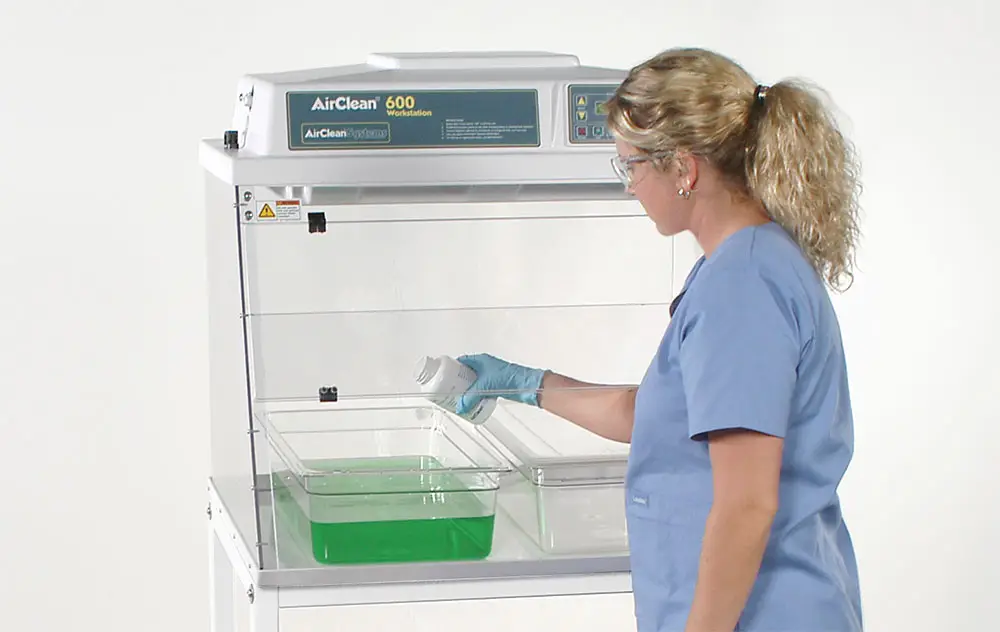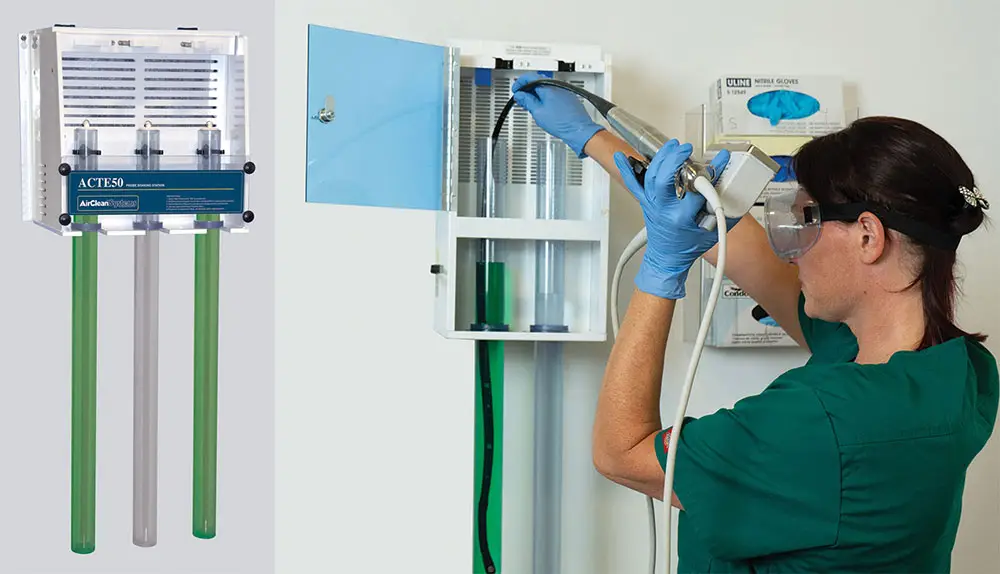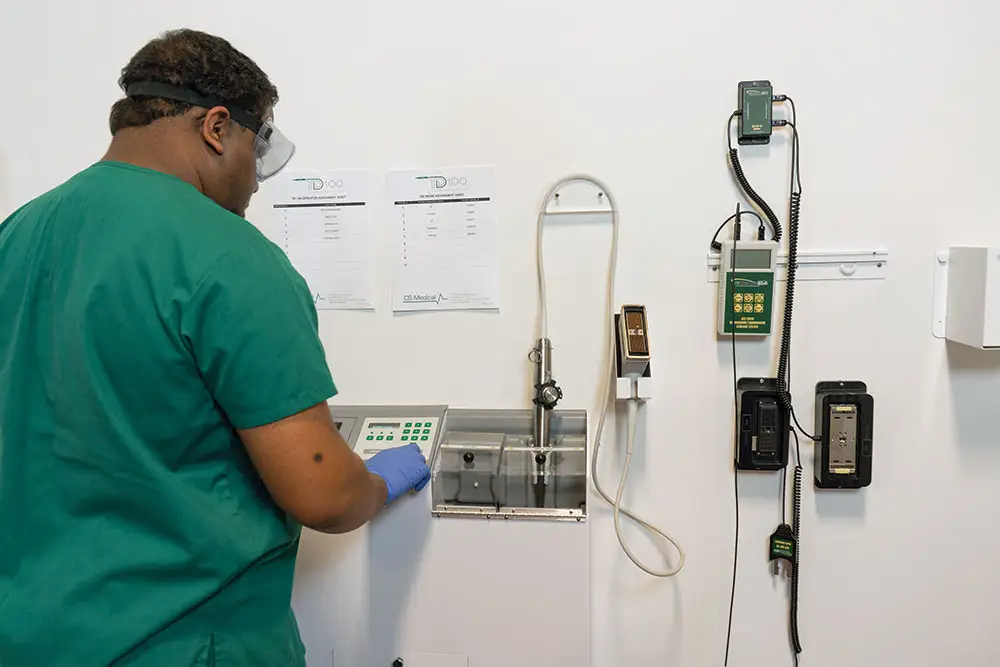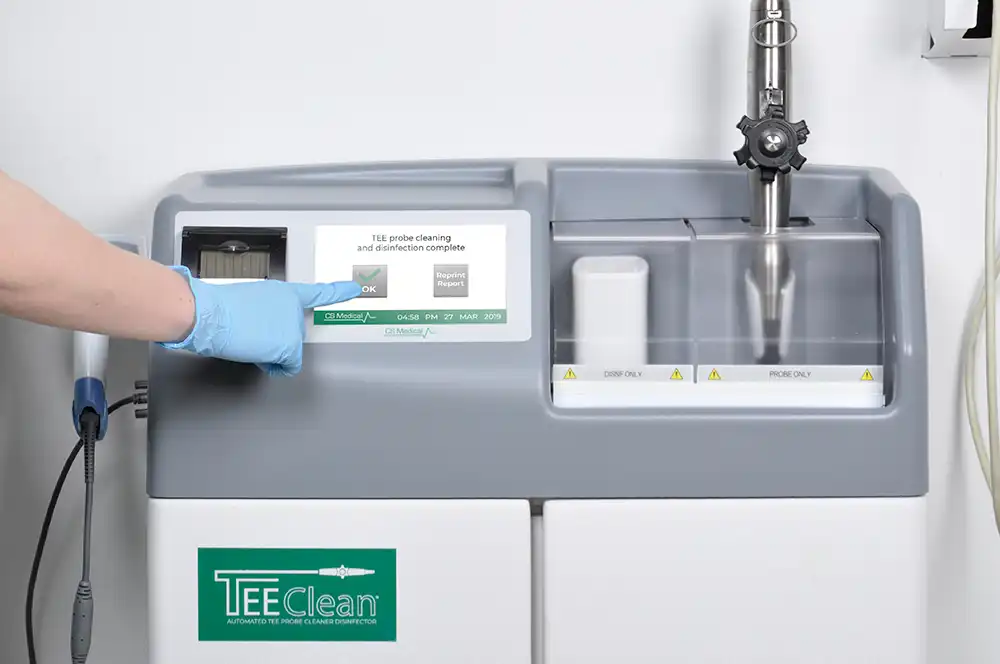Transesophageal Echocardiogram Ultrasound Probes
The Challenge
For decades, or at least the last 25 years of my professional career, healthcare professionals have been challenged with and required to reprocess reusable medical devices between patient use. The requirement to clean and disinfectant between patients is clear but the solution not as simple. Today, healthcare professionals have various resources at their disposal to aide in best practices for reprocessing. The Spalding Classification outlines what level of reprocessing is required depending on the medical device classification. A TEE ultrasound probe is required to have high-level disinfection between patient uses. The CDC (Centers for Disease Control) offers guidance on the steps of and what has to be completed in order to be safe for next patient use.
Like the Spalding Classification and the CDC Guideline for Disinfection and Sterilization in Healthcare Facilities other organization have published guidelines for liquid chemical sterilants that can be used in the reprocessing of reusable medical devices. This document, in conjunction with the other two sources, Spalding and CDC, can be used collectively to establish what has become the standard of care for the reprocessing of TEE ultrasound probes. ANSI/AAMI ST58 establishes the recommended guidelines for the selection and use of liquid chemical sterilants (LCSs)/high-level disinfectants (HLDs) and gaseous chemical sterilizers that have been cleared for marketing by the U.S. Food and Drug Administration for use in hospitals and other healthcare facilities. Included within the scope of this recommended practice are functional and physical design criteria for chemical sterilization and high-level disinfection processing areas. The guideline further discusses staff risk and the need for limitation of exposure by healthcare staff and patients.
All these recommendations and guidelines then require someone within the healthcare facility to interpret and establish best practices and standard operating procedures for their respective institution. As with everything else, technology has evolved and the method for reprocessing reusable medical devices has changed over the years. In this document I will outline, discuss, and analyze how TEE ultrasound probes and the ways they have been reprocessed have evolved over the years and how the current method is truly the best practice in the industry today.
Manual Cleaning
Looking back over the last 25 years and even earlier, healthcare workers utilized a very manual approach to reprocessing TEE ultrasound probes. First, as the guidelines recommended, they would clean the probe using a detergent prior to soaking in a germicidal solution. The manual cleaning steps have several risks that are easily identified at this point of the process. The insertion tube of the TEE probe would be placed in liquid in a basin or metal sink of water and cleaner, like in Figure 1, and be soaked per the manufacturer’s recommendation.

Figure 1. Manual cleaning with metal sink and germicidal soak.
This process was time consuming and required the medical staff to monitor the process to ensure the handle of the TEE probe did not fall into the cleaning solution. The issue is that the handle, which houses the steering controls of the distal tip, is not water tight. If the handle dropped into the basin, the fluid would enter the handle and damage the control mechanism. Also, an improperly cleaned insertion tube of the TEE ultrasound probe would result in interference with the high-level disinfectant and prevent the HLD from working properly. This interference, since the disinfectant is reusable, could reduce the efficacy of the solution, only making the need for MEC (Minimum Effective Concentration) or MRC (Minimum Recommended Concentration) testing that much more critical in the overall reprocessing steps. Time consuming and laborious seems to be an understatement at this point in the process of reprocessing TEE ultrasound probes as we transition from cleaning to disinfection. The first disinfecting chemistry used was Glutaraldehyde. This reusable germicidal solution was designed to achieve high-level disinfection at a known temperature and at a specific contact time. In review of this method, it is fraught with numerous risks that could lead to an improperly reprocessed TEE ultrasound probe. First, this manual disinfection process poses the same risk of probe damage as the manual cleaning process since both are performed in a basin or sink. Another significant risk is the physical and vapor occupational exposure to disinfectants faced by the healthcare workers. Regardless of which of the various FDA cleared HLD’s were being used, they all posed a health risk to individuals if exposure at the right levels over the course of a specific time period. Luckily, the publishing of the AAMI/ANSI ST58 guideline helped to provide a method for safe use of these disinfectants. One point was the incorporation of engineering controls or ductless fume hoods. The purpose was to take the basins currently used in the process and enclose them inside the hood, which has a motor and filter, to remove any off gases from the high-level disinfectant. This process was found to be extremely effective with glutaraldehyde and later adopted for other disinfectants as they were cleared for market by the FDA.
Basin Concept
Figure 2 illustrates a typical setup for the reprocessing of a TEE probe when using the basin concept and a ductless fume hood to provide protection to the healthcare worker.

Figure 2. Typical setup for reprocessing using the basin concept and a ductless fume hood.
This solution was ideal for removing the potential of occupational exposure to the high-level disinfectant, but another risk still existed that was costly. The handle could still fall into the basin and it would result in damage to the probe and require repair or replacement. This risk led us to the development of a soaking station exclusively designed for TEE ultrasound probes.
Ultrasound Soaking station
The next solution, in the evolution of reprocessing TEE ultrasound probes, was the invention of the ultrasound soaking stations, as illustrated in Figures 3 and 4.

Figure 3 and 4. Examples of ultrasound soaking stations.
The concept was to provide a simple yet effective device to mitigate potential occupational exposure to the disinfectant while securely holding the handle of the TEE probe and allowing the insertion tube of the probe to be placed into high-level disinfectant. The other aspects of the process were the same. The healthcare professional had to perform the MEC or MRC test of the solution between uses, ensure the correct time and the right contact temperature were as directed by the manufacturers IFU (instruction for use). The soaking stations were mounted directly to a wall within the reprocessing suite and allowed the healthcare worker to load the ultrasound probe into the soaking tubes, which replaced the basin concept from earlier, to allow for high-level disinfection of the device. The overall design was friendly enough but still had issues with probe handling to prevent damage and the potential to physically come into contact with the disinfectant when filling or emptying the tubes. The wall mounted device would require the healthcare professional to insert the distal tip at a height that was uncomfortable for many and ultimately resulted in increased distal tip shock and damage. Due to the overall length of the insertion tube of the TEE probe the wall mounted soaking station had to be hung at a height to accommodate these long tubes and the problem remained of maintaining correct temperature of the disinfectant solution. With these challenges in mind the next invention was born that solved the issues stated above. Reduction in the overall height to allow for easier placement of the probe into the disinfectant, eliminate potential splashing and pouring of disinfectants, provide a specific contact temperature in which the disinfectant had been tested, and eliminating the need for MEC or MRC testing. As a result of these risks the first automated TEE probe disinfector was engineered and received FDA clearance in 2005.
TD 100® Automated TEE Probe Disinfector
The TD 100® Automated TEE Probe Disinfector was designed and engineered to eliminate risk identified with the manual disinfection process. The TD 100 is a microprocessor-controlled device which provides the same FDA cleared high-level disinfection process each time plus ensures the removal of residual disinfectant with its multiple rinse cycles. The TD 100 moved the reprocessing of the delicate TEE ultrasound probe years ahead of the manual processes discussed earlier. The only requirement of the healthcare worker was to place a properly cleaned TEE ultrasound probe into the device and insert a single-use bottle of high-level disinfectant, as shown in Figure 5.

Figure 5. TD 100® Automated TEE Probe Disinfector.
The TD 100 removed the need for the MEC or MRC test strips that only added to the overall complexity of the reprocessing steps for the healthcare professional by using single-use bottles. These single-use bottles, of either glutaraldehyde or ortho-phthalaldehyde, are placed inside the TD 100 with no additional interaction required by the healthcare worker. The microprocessor then starts the disinfection and rinse cycle. The disinfectant is heated to a temperature of 38° C and held to provide adequate contact time with the chemical to the TEE probe insertion tube that achieves high-level disinfection. Once the disinfection is complete, the TD 100 uses potable water or filtered water to rinse all residual disinfectant from the insertion tube. The TD 100 prevented physical occupational exposure to the healthcare staff by using single-use HLD containers to prevent spills or splashes of disinfectants; additionally, the TD 100 was designed to work like a ductless fume hood, as it has a built-in vapor management filter to trap any high-level disinfectant fumes and therefore prevented vapor occupational exposure as well. Furthermore, the TD 100 removed the manual labor portion of high-level disinfection in the reprocessing steps. Also, the TD 100 reduced the risk of the distal tip damage with a lowered insertion point, to 39 inches, making it easier for all staff to use and properly place a cleaned TEE probe inside for automated high-level disinfection.
At this point, the healthcare professional and administrators could be confident that once the TEE probe was inserted into the TD 100 it would receive the same FDA cleared high-level disinfection and rinse every time. Thinking back to earlier in this document, it stated the importance of a properly cleaned TEE probe to ensure an effective HLD every time. The TD 100 addressed the manual portion of high-level disinfection but what about the same laborious and manual process to clean the TEE probe insertion tube and the potential for damage of the handle and distal tip?
TEEClean® Automated TEE Probe Cleaner Disinfector
In 2019, CS Medical introduced the TEEClean® Automated TEE Probe Cleaner Disinfector, the first AUR (Automated Ultrasound Reprocessor), as seen in Figure 6.

Figure 6. TEEClean® Automated TEE Probe Cleaner Disinfector.
This AUR effectively removed the risk associated with the laborious manual cleaning, rinsing, high-level disinfectant and rinsing of soiled TEE ultrasound probes. The TEEClean, based off the TD 100 high-level disinfection platform, was designed and engineered to enzymatically clean a soiled TEE ultrasound probe and then automatically disinfect that same probe. This machine allows for valuable time to be returned to the healthcare professional to perform other tasks in patient care and provides reduced stress and concern to the administration if the TEE probe was properly reprocessed. TEEClean is truly the most advance method for reprocessing TEE ultrasound probes available to the medical professional today.
Conclusion
The reprocessing of a TEE ultrasound probe is challenging for even the most skilled medical professional but through automation and proper training it can be accomplished. CS Medical, since its inception in 2003, has worked hand in hand with the healthcare community to design, develop, and manufacture only the best solutions to help minimize HAIs and allow the employees of each healthcare facility to be able to spend more time in the patient care arena and less time manually reprocessing soiled reusable medical devices. Technology has truly come a long way from the days of manual basins and tube soaking of TEE probes to devices specifically designed to ensure effective and reliable results each time a soiled TEE ultrasound probe needs to be reprocessed before being used on another patient.









